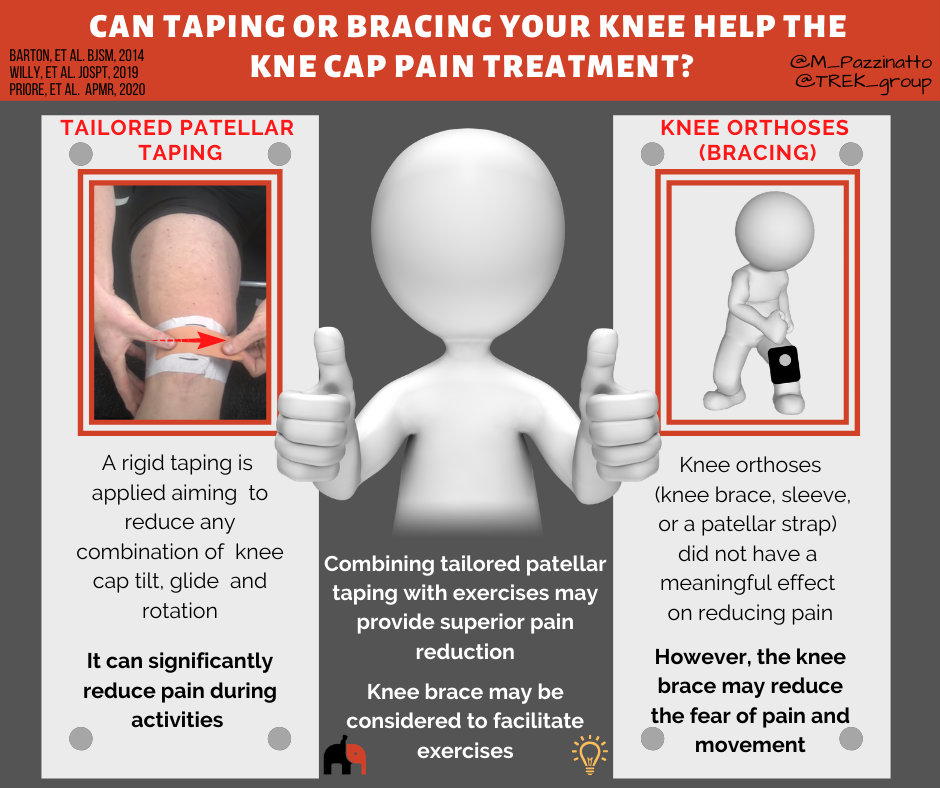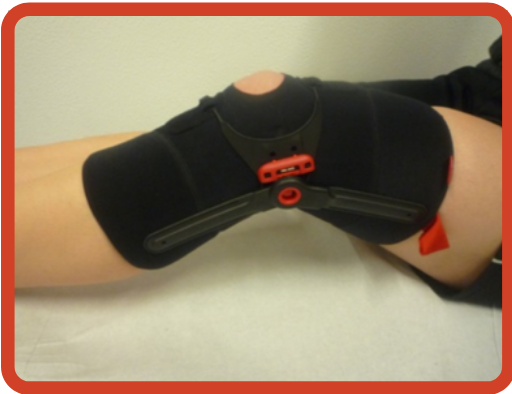Patellar taping
The most effective way to tape you knee can be different for each person, and research shows that tailoring it to your needs may optimise how much pain reduction you get. You may wish to discuss this with your physiotherapist who can assess your knee and find the most effective way for you.

Based on the best evidence available, the following taping technique may be worth trying:
Importantly, taping techniques are likely to reduce pain and improve your function during your rehab exercise program.
Knee Orthoses
Studies have revealed that knee orthoses (knee brace, sleeve, or a patellar strap) are not able to reduce pain more than exercise. However, knee braces may reduce the fear of pain and movement. Therefore, bracing may work as a strategy to improve compliance with rehab exercise.
Additionally, using a medially directed brace while exercising may lead to better outcomes and improve physical function.

